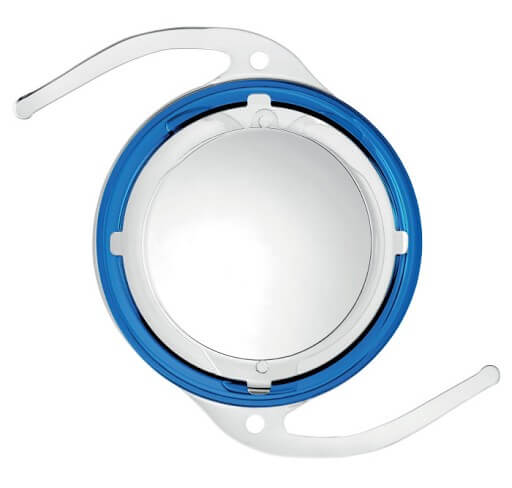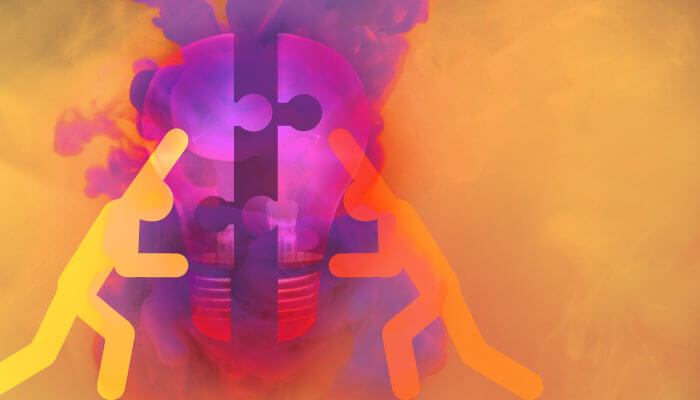
At a Glance
- Malik Kahook and Glenn Sussman have been working together on ophthalmic innovations for 12 years
- Their respective skills as a clinician and a medical device engineer and team manager complement each other
- They advise physicians to develop strong professional relationships that will complement their skill sets and result in addressing unmet needs in the field of ophthalmology.
How did you meet your innovation partner?
Malik: We met at an advisory board about 12 years ago. Glenn was working for Alcon Research and Development and I was just starting as Chief of the Glaucoma Service at the University of Colorado. I was invited by Alcon to give a talk on glaucoma lasers and Glenn approached me afterwards to start a discussion about the new devices he was studying within the Alcon R&D system. I remember the discussion was unique in that he was asking questions and carefully listening to the answers so that his follow up questions probed further. It wasn’t the typical surface level discussion about my work or his work that can happen with many brief professional encounters. We started an email discussion soon after and began exploring ways to work together.
Glenn: Malik’s talk was followed by a round table discussion with several prominent physicians. I immediately noted the attention and respect given to Malik by his “elders.” That is what drove me to engage him in the follow-up discussion.
How did this relationship develop?
Glenn: Soon after the first encounter at the advisory board meeting, I reached out to Malik to see if we could collaborate on a novel glaucoma device that I was developing. Malik had developed high-quality infrastructure for preclinical medical device testing at the University of Colorado, which complemented the resources I had available to me at Alcon. I was also excited to work with him because of the enthusiasm he exhibited toward the field of glaucoma and especially, advancing the state of the art for his patients. Malik is known for being very responsive by phone, text and email. His prompt follow up and ability to give practical feedback was evident from the start and it matched well with my style of work. I felt we would work effectively as a team and it was a bonus that we got along on a personal level. We both knew further collaboration was in our future.
What projects have you worked on together?
Malik: Glenn and I had a great experience together on the first project we worked on and kept in touch through general technical discussions for a few years. We met up at national meetings to grab a meal or coffee and got to know each other on a more personal level. I enjoyed his company – he had a wealth of experience in the ophthalmic device space, while I was still in the early stages of learning product development. He was a good teacher and offered advice easily and openly. These encounters eventually lead to discussions on how we could work on more projects together – bigger endeavors that interested us both and could be disruptive to the field of anterior segment surgery. I eventually reached out to Glenn in 2012 and asked him to lead the R&D efforts for a company that spun out of my lab called ClarVista Medical. Glenn accepted and we worked side by side for around five years prior to the company being acquired by Alcon in 2017. Working with Glenn in ClarVista was one of the most satisfying professional relationships I’ve had.
Glenn: Though the work at ClarVista was demanding and consuming, I found that we could tap into Malik’s seemingly unlimited capacity. In addition to the work on a modular intraocular lens system, Malik and I collaborated on several other projects both in and out of ClarVista, and I found this experience to be highly collaborative and refreshing. This time certainly contributed to strengthening our relationship and we had the opportunity to better understand each other’s strengths.
Why do you continue to work together?
Glenn: A coveted element of “work” is to enjoy what you are doing. The easy answer is that I simply enjoy working with Malik. In additional to our friendship, 98 percent of our professional interactions are collaborative and productive. His clinical knowledge is second to none and he supplements that with broad knowledge of product development and general life skills. He pushes me to be my best.
Malik: I believe Glenn is the perfect balance to my skill set. I’m trained as a clinician and surgeon, while Glenn is a seasoned medical device engineer and team manager. I find that Glenn asks the questions that I don’t always know to ask and is also relentless in questioning everything (and I do mean everything) along the path of device development. He also has significant insights into regulatory and clinical aspects that might be surprising to some as it was not his field of training. The years of experience have given Glenn the chance to learn across all functions of a startup and I find I learn from him with every encounter. I also must restate that I enjoy being around Glenn, and our families have gotten to know each other, and this plays a major part in how we work together.
How has this relationship made a difference to the projects you’ve worked on together, and perhaps your individual endeavors?
Malik: One of the absolute truths in the world of innovation is that it takes a team to accomplish almost anything from the early stages of development through clinical trials and regulatory approval. It is key to identify people you can work with and learn from so that the project can flourish and benefit from the right combination of experience and skill. Glenn and I recognized that our skill sets were complimentary from the early stages of our professional relationship. I know what might work clinically and surgically, but Glenn can show me an entirely different view on what the technical challenges are – and how to put in place the proper oversight and guidance to reach the ultimate goal. Along the way, both Glenn and I have taken time to learn from each other. I now know more about the engineering process and manufacturing nuances than I did in the past. Glenn is now more adept at recognizing clinical and surgical needs and how to best care for the patient. This cross functionality and willingness to share and learn has made both of us better inventors. Our execution in research and development has been elevated. None of this would happen without an environment of trust and willingness to admit when we need help. I also think this has made me a better clinician and surgeon as it has opened my eyes to a different approach with everyday decision making. We are both better individually but our capacity for innovation is augmented when we team up.
What plans do you have for future collaborations?
Glenn: Malik and I have had opportunities to collaborate in many different environments including university laboratories, large corporate projects as well as building start-ups from early days to acquisition. We have recently taken our professional relationship a step further and partnered on the formation of an ophthalmic device incubator called SpyGlass Ophthalmics (SGO). Previous investment partners have again placed their faith in us and we jumped at the chance to lead a new effort with great potential to help patients around the globe. SGO will allow us to apply all that we have learned together to develop devices that address unmet needs across broad ophthalmic therapeutic areas. The challenge of building SGO together from day one is both exciting and daunting. I can’t think of another partner with whom I would rather share this challenge.
What advice do you have for others in the field with regards to developing successful partnerships?
Glenn: I would advise any physician who is looking to develop a strong collaborative relationship to seek out individuals that supplement their own skill set. Cultivate these relationships to determine if you can develop mutual respect. If so, continue to ensure you can work together. Any development collaboration will have its challenges and disagreements; working through these hard times and coming out the other end with trust and respect intact is what will foster a long, successful collaborative relationship. Finally, from wherever your expertise resides, recognize that product innovation and development is a multi-faceted venture. Having a partner to supplement your skill set is key, one can’t do and know it all.
Malik: Many professional relationships that are lasting often happen organically and have a major component of being compatible on a personal level. It is hard to pinpoint ways to induce such relationships, however, it is obvious that being open to meeting others and sharing your thoughts and listening carefully to others could lead to a chance encounter and long-lasting relationship. I believe it is important to be generous with your time and to respect the experience that others bring to the table. I also believe that deep relationships that are built on trust mature best in times of stress and challenge. Glenn and I had some stressful times together in the startup world and certainly argued and disagreed about things along the way. What was key for both of us was maintaining respect for each other and knowing that we wanted each other to succeed. I guess it boils down to not just being colleagues, but also – and more importantly – being true friends. I’m glad we met at the advisory board over 10 years ago and I’m excited about what our continued partnership will lead to in years to come.
Relevant disclosures:
Malik Kahook: Patent Royalties from New World Medical, Johnson and Johnson Vision, Alcon, Aurea Medical, Fluent Ophthalmics, SpyGlass Ophthalmics and ShapeTech. Consultant to SpyGlass Ophthalmics, Aurea Medical, New World Medical, Fluent Ophthalmics, Alcon, Allergan, and Equinox. Ownership in SpyGlass Ophthalmics, ShapeTech, Ivantis, Equinox, Aurea Medical and Fluent Ophthalmics.
Glenn Sussman: Ownership in SpyGlass Ophthalmics.

